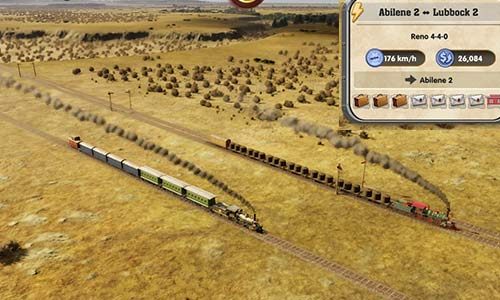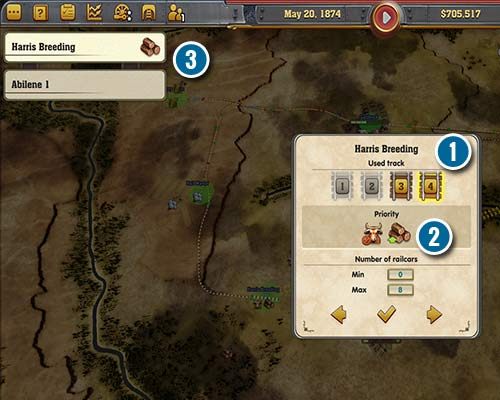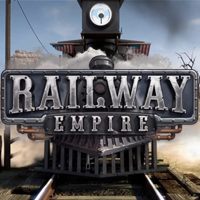Railway Empire: Express and Cargo Trains
Last update:
Table of Contents
The game allows you to transport any combination of carriages with cargo or resources and those with passengers or mail. However, you will quickly discover that the separation of these two groups is a much better idea. Why?
- Mail and passengers provide higher yields the quicker the transport service. You will receive less money if you deliver express goods with a delay. The distance also has an impact: the further and faster, the higher the income. This means that you will need fast trains of a high standard, so that they offer a very comfortable ride. Placing tracks on flat ground and avoiding narrow turns and extreme inclinations will also aid you in making your routes more profitable.
- On the other hand, cargo trains that transport resources and goods do not have their profits dependant on speed or distance. Of course, you still want to deliver the goods as quickly as possible, in order to receive the money sooner. However, you will always receive the same amount. This is why cargo trains are usually slower railway engines with a lot more power. This allows them to handle rough terrain and reach remote factories and mines. If there are express and freight trains on the same route, you will quickly see that this is not entirely effective. At the beginning of each mission, you will not feel the impact of such a solution. You will only have a few trains, and cities will not have high expectations. However, the further into the scenario you go, and the larger your rail network, the more organization it will take to maximize the effectiveness of your trains.
- For better organization of the work that your trains do, look at the line settings menu (upper right corner). This is the same window that you use to create connections. You will see several options there: the name of the connection, the load and the time forecast of how long will be needed to complete the route. The most important option for us is the "Load" option. Here you can choose whether the train is loaded automatically, only with express goods, only with standard goods or manually. The first option takes everything from the station and usually selects the most needed goods. However, it has a tendency to mix passengers and mail with goods. The next two options limit the choice of loading, which will allow you to choose the correct locomotives for each type of cargo. In the later stages of the game, some engines are created for very specific tasks, such as transporting a certain mixed load, or one composed purely out of passengers or goods. This degree of specialization will allow you to maximize their effectiveness.

The express train (on the lower route) is going at a dizzying speed of 170 km/h, while the freight train on the other track is only reaching half that speed. If those trains rode on the same line, sooner or later, the slower freight train would block the faster express train. Thanks to having separate routes, the express train can bring in a large income.
- At the beginning of the mission, or when building a new connection between cities, it is worth creating one train as an express train and another as a freight train. If the cities are really small, you can compromise and create only one train, which will automatically select goods from the stations. You cannot count on large profits in such situations. In the case of two trains, make sure that they take off at opposite stations and build a railway siding in the middle of the route (or more if the route is long). This way, you will avoid the delays caused by the slower train being in front of the faster one and blocking its path. This is especially important for any express trains, since the profits are dependable on the speed of the service.
- Later on, it is worth building two separate tracks, one for freight trains and trains carrying various resources, and another only for passenger trains. On most short lines (about 100 km), one train is enough. On longer ones (i.e. more than 200-300 km) an additional engine is required. This division is important because every delay affects profits. Of course, you can create a double-track with signalling, but more trains will still have a bad effect on the throughput. Trains tend to experience random breakdowns, and the more engines on the route, the greater the chance of downtime due to traffic. You can also build a separate line for each platform with sidings or you can simply connect each platform with a separate route (however, this is quite costly, although it causes the least problems).

After selecting a given destination (1), you can decide which track the train is supposed to enter (2), which goods will be a priority (3, the symbol will also be visible next to the name of the station, 1) and with how many wagons the train is supposed to leave this station.
- Another useful technique you can use is to choose the platform on which loading/unloading will take place. The game always selects the nearest available track, even if it is used by 10 trains, and the remaining 3 platforms are unused. At the beginning of the game, you can build a moderately sized station and choose one track specifically for passenger trains and the other only for cargo trains. It is important to set the appropriate platforms, otherwise they will start to ride on the same line.
- If the trains do not have to use the same route, build separate access points to the station for them. If you cannot build a bigger station, let the trains arrive from different directions. This way they will not block themselves on the tracks (they will only wait until the second train leaves the station; otherwise one train has to wait for the second one to reach a non-collision track). Usually you will have more freight trains, because cities need a lot of different goods and this demand grows over time. That is why it is important to have proper logistics and build tracks, lines, stations and develop the infrastructure.
You are not permitted to copy any image, text or info from this page. This site is not associated with and/or endorsed by the developers and the publishers. All logos and images are copyrighted by their respective owners.
Copyright © 2000 - 2025 Webedia Polska SA for gamepressure.com, unofficial game guides, walkthroughs, secrets, game tips, maps & strategies for top games.
